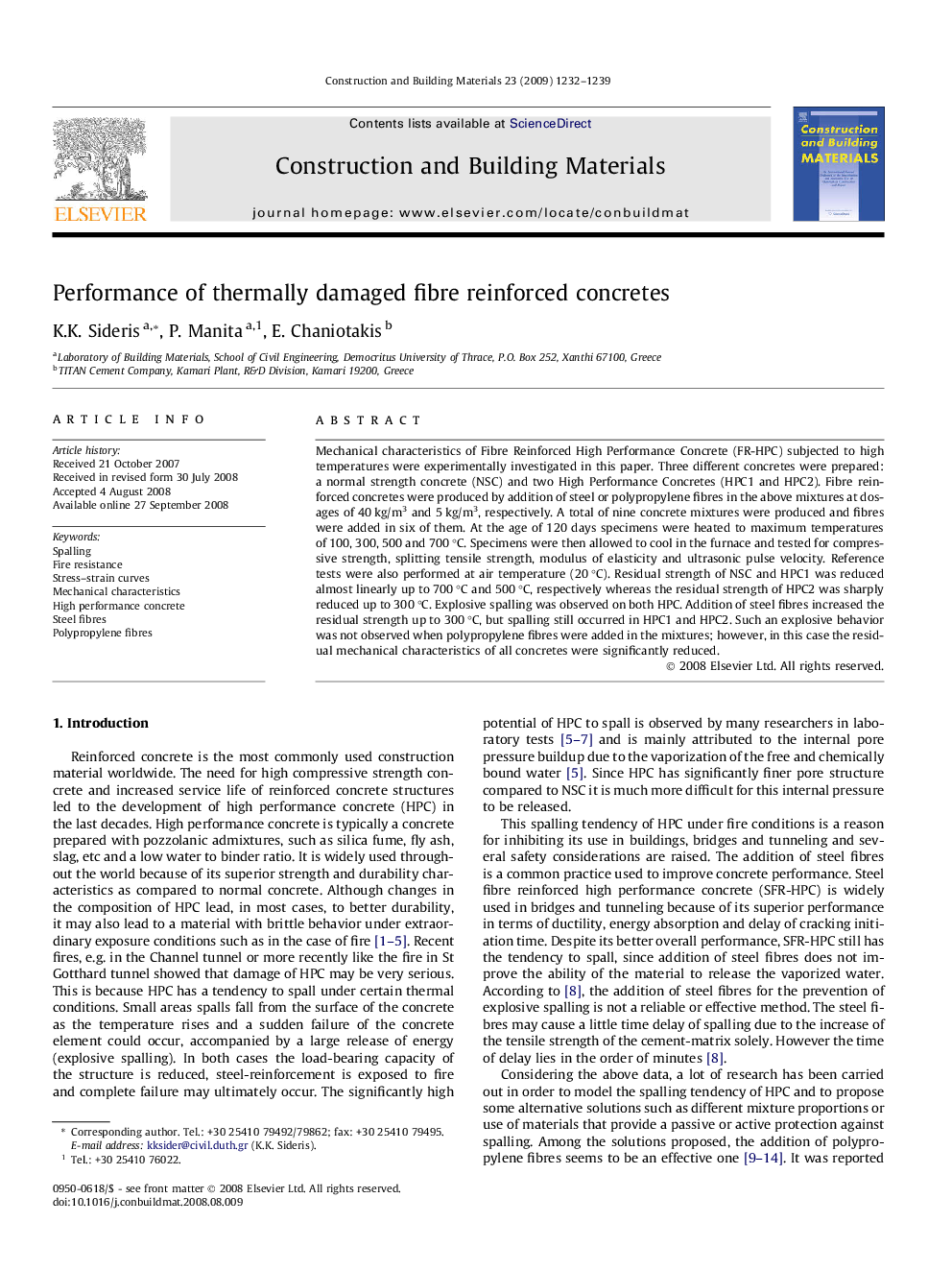| Article ID | Journal | Published Year | Pages | File Type |
|---|---|---|---|---|
| 260283 | Construction and Building Materials | 2009 | 8 Pages |
Mechanical characteristics of Fibre Reinforced High Performance Concrete (FR-HPC) subjected to high temperatures were experimentally investigated in this paper. Three different concretes were prepared: a normal strength concrete (NSC) and two High Performance Concretes (HPC1 and HPC2). Fibre reinforced concretes were produced by addition of steel or polypropylene fibres in the above mixtures at dosages of 40 kg/m3 and 5 kg/m3, respectively. A total of nine concrete mixtures were produced and fibres were added in six of them. At the age of 120 days specimens were heated to maximum temperatures of 100, 300, 500 and 700 °C. Specimens were then allowed to cool in the furnace and tested for compressive strength, splitting tensile strength, modulus of elasticity and ultrasonic pulse velocity. Reference tests were also performed at air temperature (20 °C). Residual strength of NSC and HPC1 was reduced almost linearly up to 700 °C and 500 °C, respectively whereas the residual strength of HPC2 was sharply reduced up to 300 °C. Explosive spalling was observed on both HPC. Addition of steel fibres increased the residual strength up to 300 °C, but spalling still occurred in HPC1 and HPC2. Such an explosive behavior was not observed when polypropylene fibres were added in the mixtures; however, in this case the residual mechanical characteristics of all concretes were significantly reduced.
